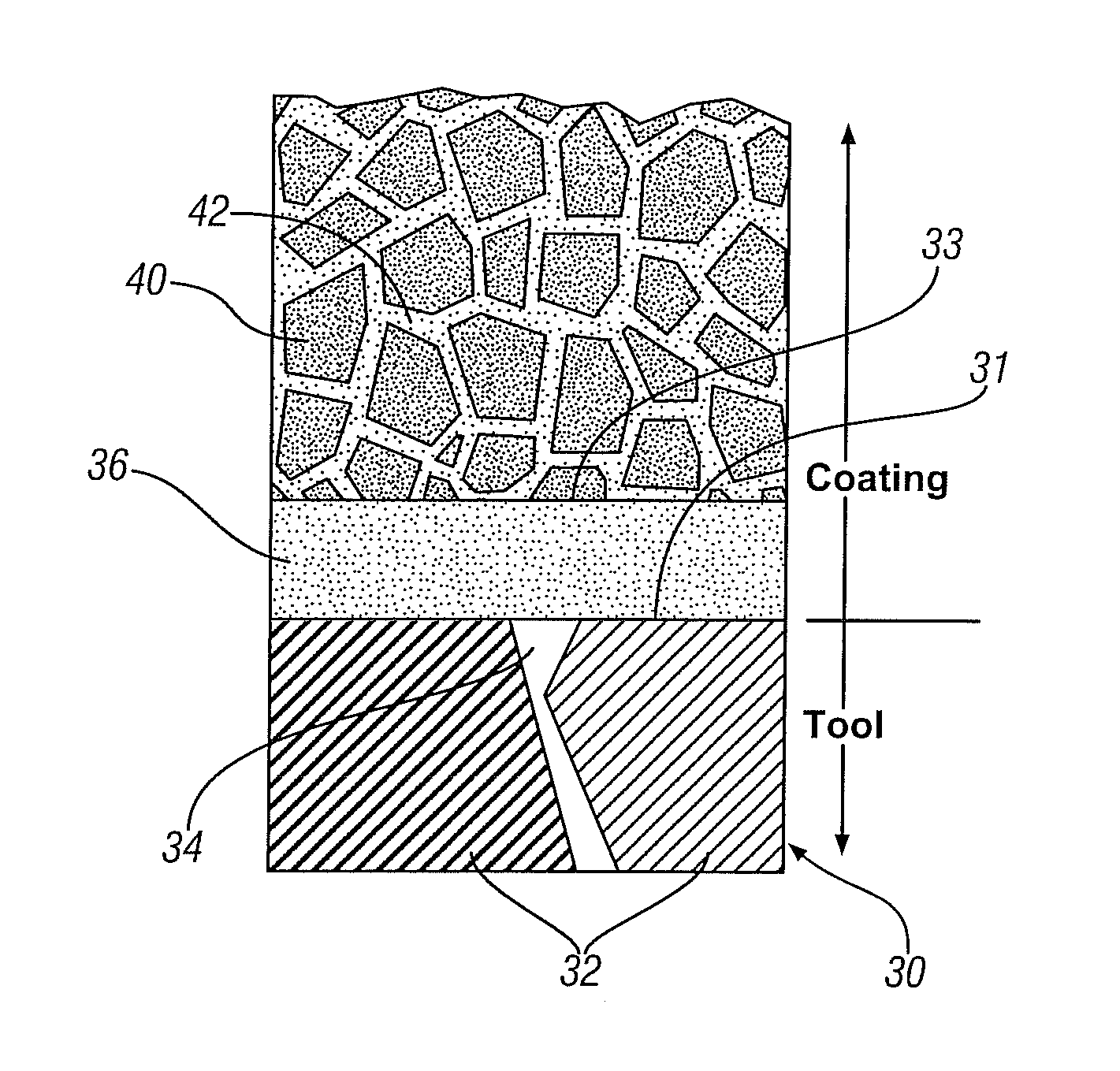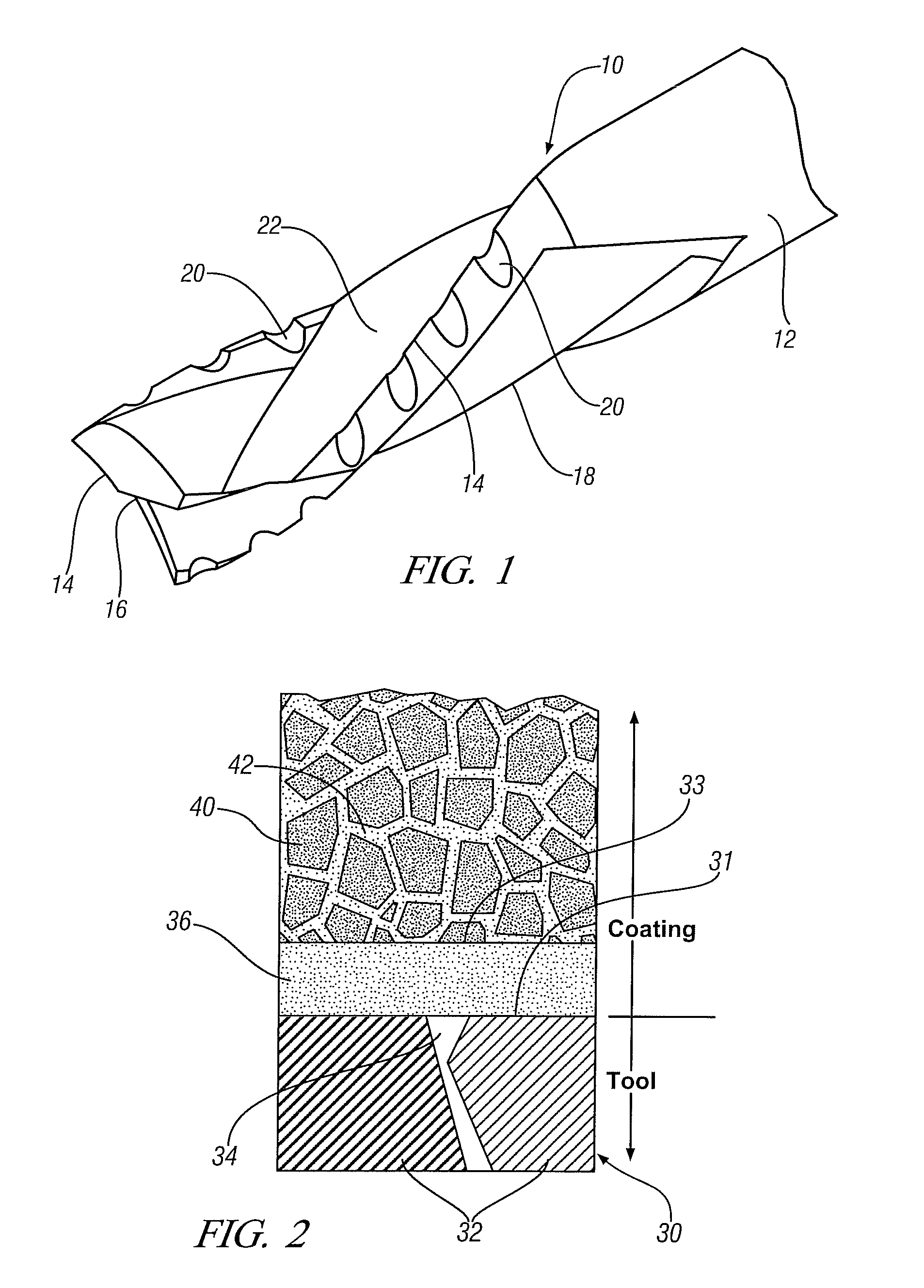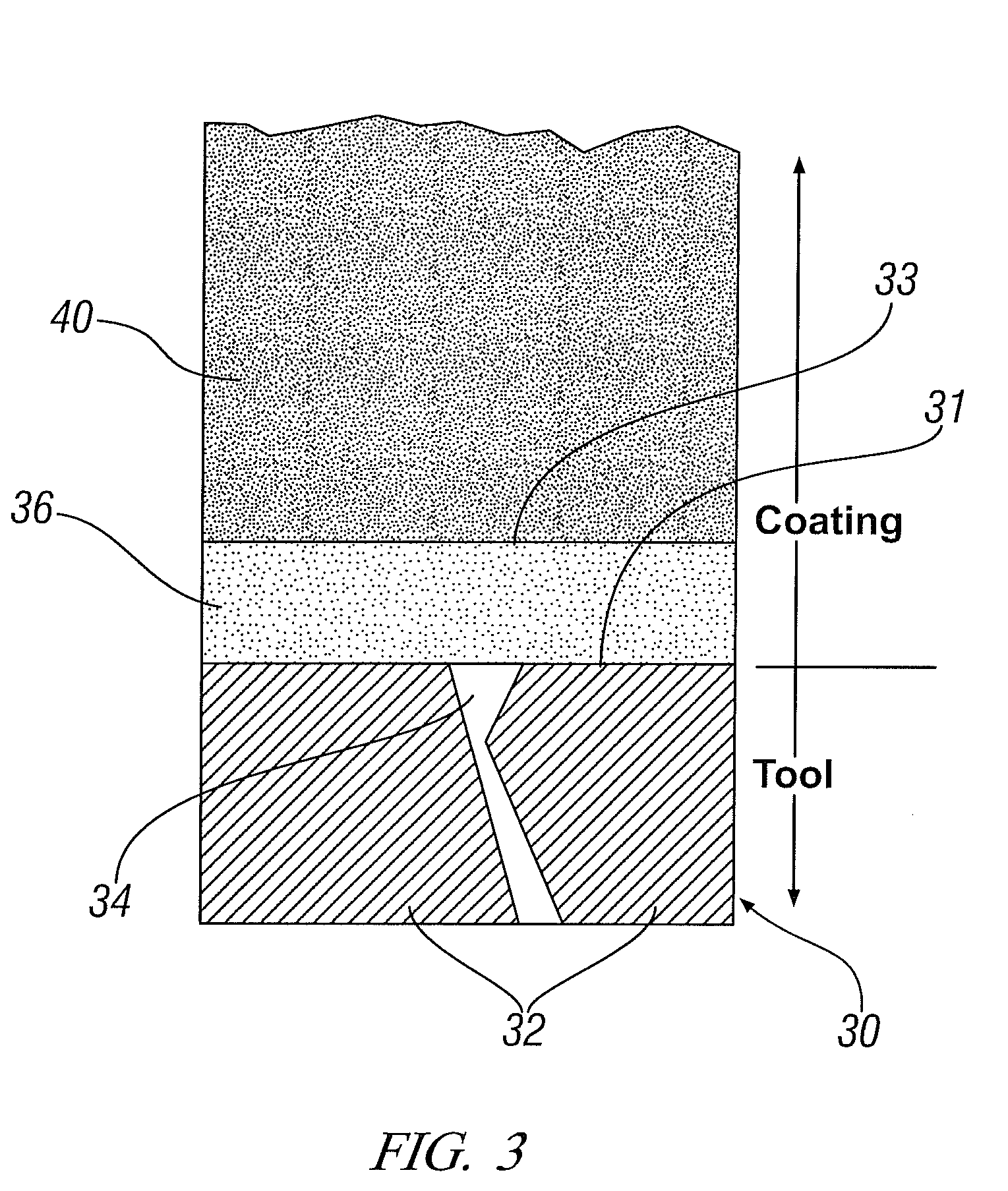High hardness nanocomposite coatings on cemented carbide
a cemented carbide and nanocomposite technology, applied in the field of high hardness nanocomposite coatings on cemented carbide, can solve the problems of undesirable graphite, complicated diamond deposition process, and mixture of carbide and metallic binder, so as to reduce the need for machining coolant or lubricant, improve durability and adherence, and reduce the effect of machining tim
- Summary
- Abstract
- Description
- Claims
- Application Information
AI Technical Summary
Benefits of technology
Problems solved by technology
Method used
Image
Examples
Embodiment Construction
[0018]The practice of this invention has been discussed in the context of its utility for one application of carbide, cutting tools, one example of which is shown in FIG. 1. This tool 10 is secured to a chuck or collet in a milling machine by shank 12 and has multiple cutting edges 14, not all of which are called out, both on its underside 16 and along the length of the tool 18. This tool is intended for rapid metal removal, ‘roughing’, and has chip splitting features 20 on the cutting edges 14 which extend along the length of the tool 18. These chip splitters 20 are intended to fragment the chip into smaller more manageable metal fragments. Helical grooves 22, ‘flutes’ run from tool underside 16 to almost shank 12 and serve to transport and discharge the machining chips. With the exception of the shank 12, the cited elements of this tool are subject to one or more of: significant loads due to metal cutting; elevated temperatures; and abrasion due to the transit of metal chips durin...
PUM
| Property | Measurement | Unit |
|---|---|---|
| thickness | aaaaa | aaaaa |
| wt. % | aaaaa | aaaaa |
| total gas pressure | aaaaa | aaaaa |
Abstract
Description
Claims
Application Information
 Login to View More
Login to View More - R&D
- Intellectual Property
- Life Sciences
- Materials
- Tech Scout
- Unparalleled Data Quality
- Higher Quality Content
- 60% Fewer Hallucinations
Browse by: Latest US Patents, China's latest patents, Technical Efficacy Thesaurus, Application Domain, Technology Topic, Popular Technical Reports.
© 2025 PatSnap. All rights reserved.Legal|Privacy policy|Modern Slavery Act Transparency Statement|Sitemap|About US| Contact US: help@patsnap.com



